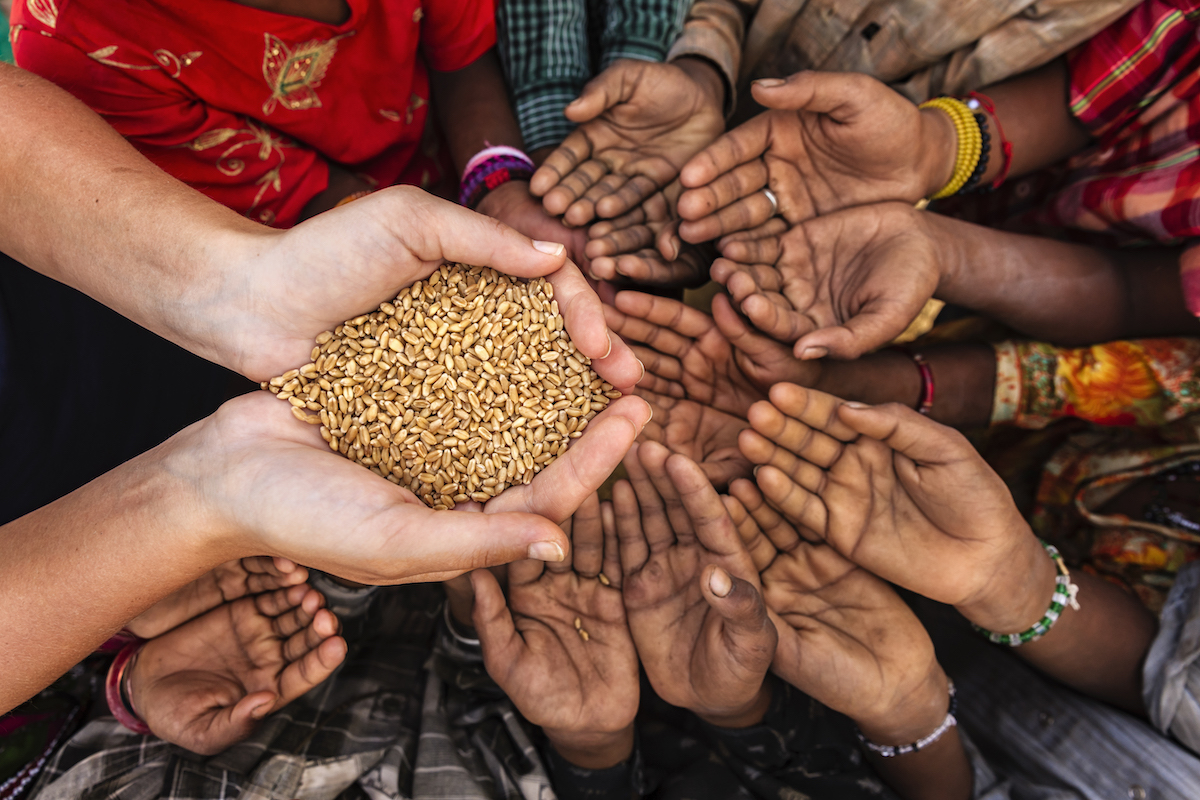Nearly one in ten people worldwide suffers from hunger. Goal 2 of the United Nations Sustainable Development Goals is to end hunger, but we are failing in our efforts. According to the Food and Agriculture Organization (FAO), eight per cent of the world population will continue to suffer from hunger in 2030, the target year for achieving the zero-hunger goal. The world population suffering from hunger in 2015, when these goals were adopted, was also eight per cent.
Armed conflicts, climate change and Covid-19 are some key factors behind failing efforts to combat global hunger. With more than 800 million people going to bed on an empty stomach, the basic tenets of humanity are under question. The global hunger crisis is not due to lack of supply or food unavailability but is largely an issue of price, purchasing power and food wastage. The FAO estimates that one-third of the total food produced on the planet ends up in a landfill.
Food wastage is an issue of concern in both developing and developed countries. Food wastage occurs more at the retail and consumer end in developed countries. In developing countries, post-harvest and processing losses are more prominent. Wasting food is an ethical concern since large number of people suffer from hunger worldwide. It is also a key contributor to the global hunger crisis and is detrimental to environment and climate.
According to the US Environmental Protection Agency, there is more food in landfills than any other single material. Food scraps do not easily degrade in landfills and get tightly compacted creating anaerobic conditions around them. In the absence of oxygen, the degrading food waste releases methane which is a potent greenhouse gas (GHG) more dangerous than carbon dioxide. The global warming potential of methane is several times that of carbon dioxide.
According to the FAO, GHG emissions caused by food waste account for about eight per cent of total anthropogenic GHG emissions. If food loss and wastage were a country, it would be the third largest GHG emitting country in the world. The food and agriculture industry consumes nearly 35 per cent of global freshwater and more than 30 per cent cropland. Large volumes of harmful chemical fertilizers and pesticides are sprayed on crops and soil for producing food.
In India, where close to 60 per cent land is under agriculture, food production contributes significantly to soil and water pollution. The groundwater table in the North Indian states of Punjab and Haryana has declined significantly due to intensive agriculture. Conflicts over water resources to meet agricultural demand are on the rise across India. Wasting one plate of food means wasting all the natural resources and efforts that have gone into producing it.
Despite these concerns, India is a large food waste generating country. According to the UN’s Food Waste Index report 2021, India wastes 68.8 tonnes of food every year. The Global Hunger Index 2022, although disputed by the Government on methodology, ranks India at 107 out of 121 countries. There is a need for reimagining food supply and accessibility since the current food system is not working for everyone.
Food supply chains in India need to be designed on the principles of circular economy beginning with the 3Rs of reduce, reuse and recycle. Food wastage at production level must be reduced by organising operations efficiently. Food industry standards need to be strengthened to minimize waste generation at all levels. Municipal agencies must lead awareness to prevent food wastage across cities and towns.
Reusing surplus edible food is critical for preventing food wastage. Pioneering initiatives by civil society organisations are needed to create platforms for redistributing surplus food. Government and municipal agencies can help by making feeding the hungry a priority. Donating extra edible food helps save resources that were utilized for food production and should become a regular practice. Surplus edible food can also be plugged into existing government schemes for feeding the poor.
Some food waste is bound to happen due to the nature of this industry. Recycling food waste and inedible byproducts will close the loop by avoiding landfill dumping. Encouraging start-ups that are working to convert food leftovers to compost or energy is a step in the right direction. The success of such initiatives will help promote segregation of waste at household level. Adopting waste segregation is a key step for preventing food waste from reaching landfills.
Goal 12 of the UN Sustainable Development Goals aims at achieving responsible consumption and production. One of its targets is to halve global per capita food waste by 2030. India has a rich past of generating minimal waste and maintaining sustainable lifestyle. Feeding the hungry is part and parcel of the traditions, culture and heritage of India. Revisiting the Indian value system and amalgamating it with the circular economy can help end hunger and food wastage.
(The writers are, respectively, a student and an associate professor at Jindal School of Environment & Sustainability, O.P. Jindal Global University, Haryana, India.)












